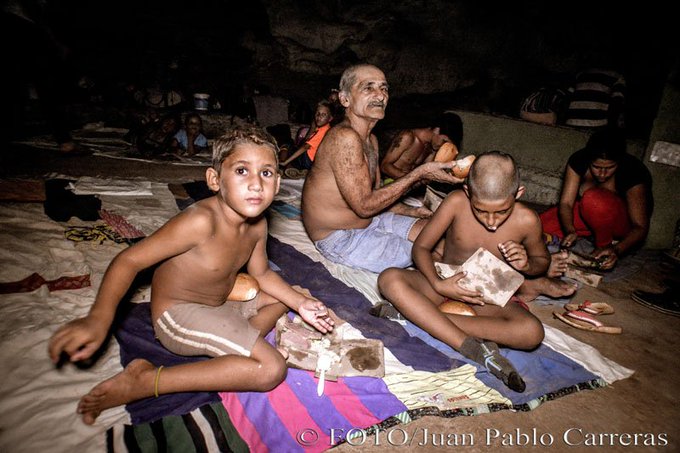‘This is really a mess’: Cubans pick up the pieces after Hurricane Irma wallops island (VIDEOS)
Local
residents return home after the passage of Hurricane Irma in
Caibarien, Villa Clara province, 330km east of Havana, on September
9, 2017. © Adalberto Roque / AFP
RT,
10 September, 2017
Cubans are dealing with the aftermath of deadly Hurricane Irma, the most powerful storm to hit the country since 1932.
Irma
was a Category 5 storm, the highest possible ranking on the
Saffir–Simpson scale, when it bashed Cuba on Saturday morning.
The
hurricane, which had already wrought havoc across the Caribbean and
killed 22 people, brought winds of 200kph, uprooting trees, tearing
off roofs and leaving widespread flooding in its wake.
The
government had ordered the evacuation of more than a million people
in advance of the storm landing. Juan Pablo Carreras, a photographer
with Cuban news outlet ACN, captured
pictures of
many of the evacuees taking refuge in underground bunkers in advance
of Irma’s arrival.
The
storm weakened to a Category 3 as it moved north along a 320-km
stretch of the coastline.
However,
it later regained strength as it moved further north towards Florida.
Cubans awoke Sunday morning to find destruction similar to that
suffered by other Caribbean islands lashed by the powerful storm.

While
the eastern and northern coasts were the worst hit, the force of the
storm sent flooding further inland and for a period on Saturday, Irma
covered most of the island.
ACN noted that
the Civil Defense put the provinces of Mayabeque and Artemisa and the
capital Havana in an "alarm phase" at 8am on Saturday.

The
island’s famous tourist areas, including Cayos Coco, Guillermo, and
Varadero, all sustained serious damage as the storm walloped the
island’s eastern seaboard. However, no deaths have been reported.

Irma leaves Cuba late Saturday with staggering damage to infrastructure and agriculture
Photo
http://thairesidents.com
the Big Wobble,
the Big Wobble,
10 September, 2017
As Irma left Cuba late on
Saturday and directed its 200kmh winds towards Florida, authorities
on the island were assessing the damage.
They warned of staggering damage to keys off the northern coast studded with all-inclusive resorts and cities, as well as farmland in central Cuba.
There were no immediate reports of deaths in Cuba - a country that prides itself on its disaster preparedness - but authorities were trying to restore power, clear roads and warning that people should stay off the streets of Havana because flooding could continue into Monday.
Residents of "the capital should know that the flooding is going to last more than 36 hours, in other words, it is going to persist," Colonel Luis Angel Macareno said late on Saturday, adding that the waters had reached about 600 meters into Havana.
As Irma rolled in, Cuban soldiers went through coastal towns to force residents to evacuate, taking people to shelters at government buildings and schools - and even caves.
Video images from northern and eastern Cuba showed uprooted utility poles and signs, many downed trees and extensive damage to roofs.
Witnesses said a provincial museum near the eye of the storm was in ruins.
And authorities in the city of Santa Clara said 39 buildings collapsed.
More than 5,000 tourists were evacuated from the keys off Cuba's north-central coast, where the government has built dozens of resorts in recent years.
Civil defence official Gregorio Torres said authorities were trying to tally the extent of the damage in eastern Cuba, home to hundreds of rural communities and farmland.
From Radio NZ - rare reporting





No comments:
Post a Comment
Note: only a member of this blog may post a comment.